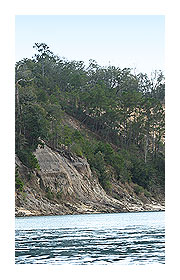The Apalachicola River basin is a geographic area with many unique features worthy of superlatives. Consider:
- The Apalachicola River has the largest water flow volume in Florida, is the fifth largest entering into the Gulf of Mexico, and is the 21st largest in the U.S.
- The basin has the highest species diversity of reptiles and amphibians in the U.S. and Canada, with more than 40 species of amphibians and 80 species of reptiles.
- Apalachicola Bay supports one of the most productive fisheries in the U.S., accounting for 13% of the nation's oysters and over 50% of Florida's oysters.
- Apalachicola Bay is recognized by UNESCO as an International Biosphere Reserve
- The largest stand of tupelo trees in the world is in the lower Apalachicola floodplain.
- The Apalachicola National Forest which borders the river is one of the largest contiguous blocks of public lands east of the Mississippi, making the area a popular destination for camping, boating, hunting, fishing, bicycling, and horseback riding.
The beauty of the Apalachicola River basin is attracting many visitors to come and settle here permanently. But with increasing population comes the potential for the degradation of the very things that brought people here in the first place. Resources that were once abundant may become limiting. In the Apalachicola River basin, recent events include:
- Over 85% of the Apalachicola River's flow is water released from behind Jim Woodruff Dam at the border of Georgia, and Florida. The River Basin Commission, created to provide long-term protection for the river's flow regime, adjourned without an agreement.
- Arvida, a Florida development company, will be promoting residential, commercial, and resort developments in the Florida panhandle for the next 50 years. Parts of the Apalachicola River basin are in Arvida's plans. Some long-time residents of the basin are concerned about the potential impacts of the Arvida projects in the Apalachicola basin.
Recognizing the need for a comprehensive examination of the Apalachicola River basin, the National Oceanic and Atmospheric Administration (NOAA) funded this Apalachicola River basin project by Florida State University (FSU). This section of the ARROW web site provides information about the resources to be found in as well as some of the planning issues occurring in the Apalachicola Basin.
- The link provides a general historical account of the 7-county ARROW region as well as a historical account of each county. Historical maps and photos from each county as well as recollections of important historical local events by long-time area residents (i.e., oral histories) will be accessible through this link.
- The link provides information that will be useful for those wanting to become involved in the planning process in the ARROW region, especially those processes dealing with land use planning. Links to county-specific governmental contact information is available here as well as listings of some county-specific resources.
- The link provides an introduction into the geological processes that formed this unique region of Florida.
- The link provides an introduction into the biological communities that can be found in the ARROW region. Lists of Florida Natural Areas Inventory-tracked species or communities that can be found in each county can be accessed by this link.
